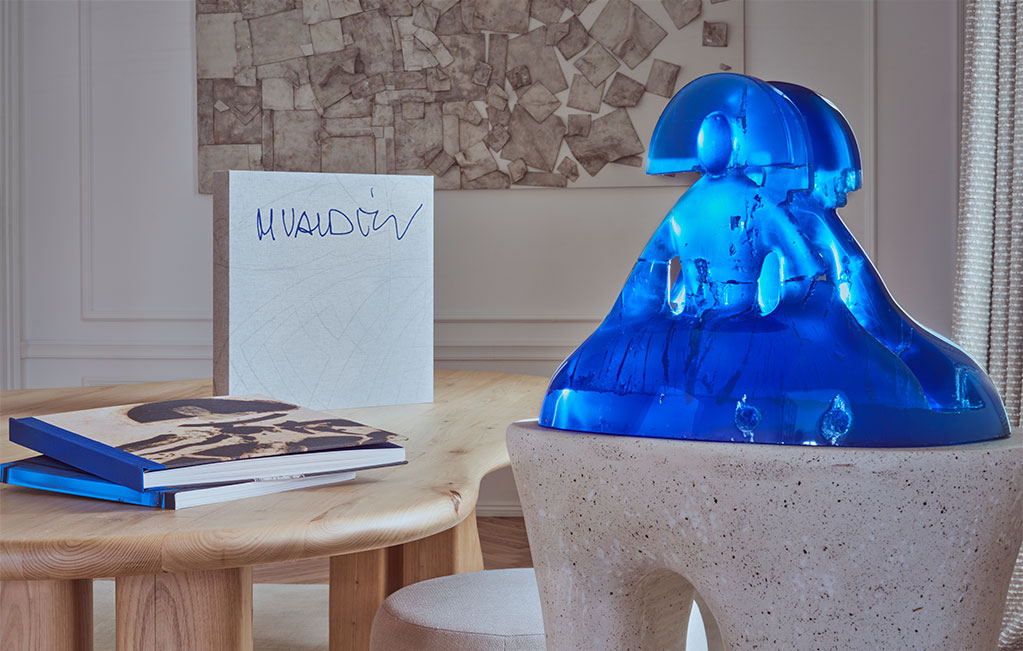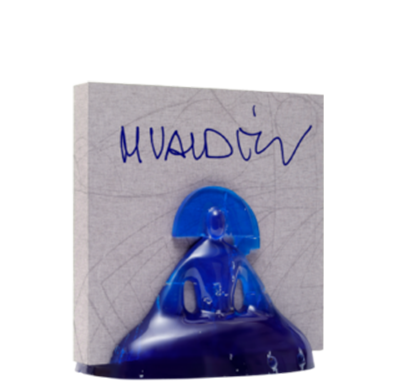Manolo Valdés in five of his creations
From the second half of the 20th century onward, Manolo Valdés established art as a tool for social advocacy alongside other artists. A call from New York marked the beginning of a new chapter in his career, as he found himself alone and displaced, with the Big Apple as his only companion. From the art capital, his works spread worldwide as a tribute to those that have shaped history before him: an era of reading, interpretation, and reinvention in which he allows himself to be guided by art. Under his gaze and techniques, Valdés inscribes himself in the history of art while simultaneously tracing a parallel timeline with a regenerated identity.
Portrait of Madame Matisse, by Henri Matisse
Portrait of Madame Matisse (1905) is an expression of Amélie Matisse, the painter’s wife. The Fauvist world was the first to awaken Valdés’s need to experiment with art history, and Henri Matisse was one of the artists who captivated him, leading to a series of prints with such recognizable coloration. His fixation on this work lies in his perception of the painted face as a mask, prompting him to emphasize this intuitive element to the point of redefining it, uncovering the portrait from a new angle.
Les Demoiselles d’Avignon, by Pablo Picasso
Valdés’s interest in Cubism led him to use the movement as a pretext for reinterpretations on numerous occasions. He draws inspiration from his novice self who painted Les Demoiselles d’Avignon (1907), focusing on the five Barcelona prostitutes, whom he decodes and reconstructs with a Cubism infused with color and collage. These characters appear, together or separately, throughout a series of works titled El cubismo como pretexto (Cubism as a pretext), in which he monumentalizes motifs that are not protagonists in the original canvas.
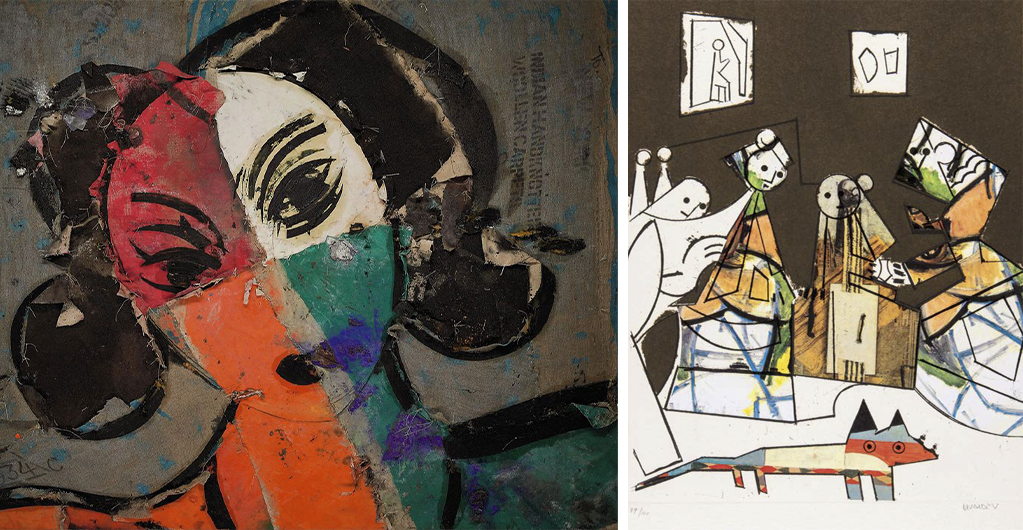
Left: Odalisca VIII, 2004. Oil and collage on burlap, 188 × 229 cm. Private collection.
Right: El cubismo como pretexto 4 (detail), 2003, Ed. 100. Etching and collage, 64 × 48 cm.
Queen Mariana of Austria, by Diego Velázquez
Queen Mariana of Austria (1652–1653) by Velázquez is the official portrait of the niece and wife of Felipe IV. Valdés’s reinterpretations take not only from the official portrait but also from the series of portraits made of the queen over the years. While respecting the white elements of the originals intended for the court, he reimagines the colored parts through etching. The international recognition the artist has gained for his contributions has made this figure a tireless star of his artistic work, with the most recent version of Queen Mariana being a sculpture preceding Damas y Caballeros, his edition with ARTIKA.
The Little Fur, by Peter Paul Rubens
The Little Fur or Helena Fourment in a Fur Robe (1636–1638), by Peter Paul Rubens, is a portrait of Helène Fourment, the painter’s second wife, facing the viewer with her body in profile, partially covered by a fur coat. Valdés omits the hidden parts and applies other techniques to sculpt Helène’s exposed features, particularly scratches and collages that fill the figure outlined by a quick stroke. A notable detail of The Kiss by Gustav Klimt is used to reinterpret the woman’s hair.
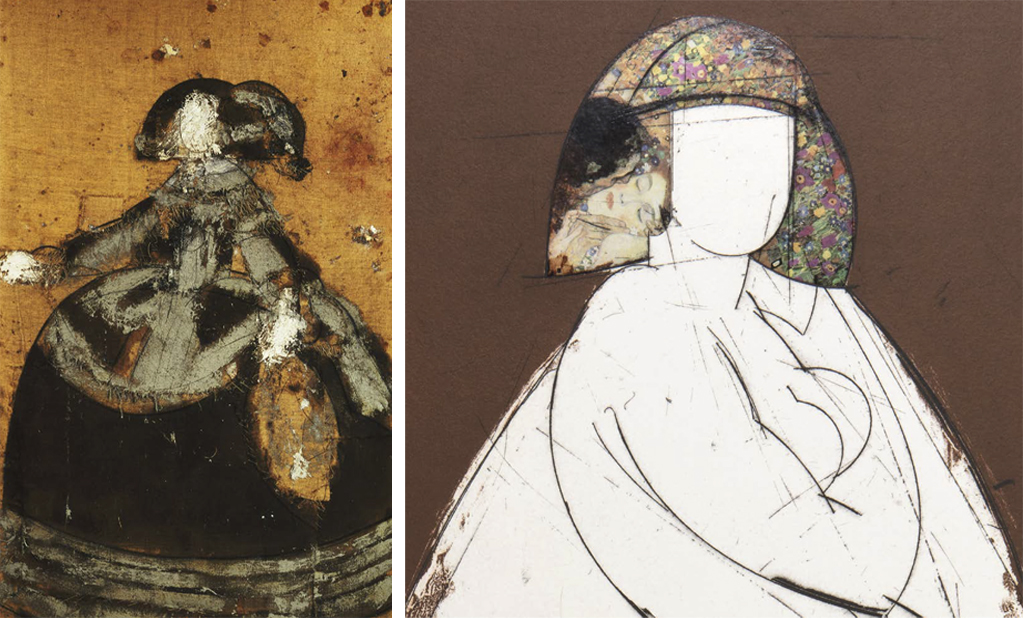
Left: Reina Mariana IV (detail), 2001. Ed. 50. Etching and collage, 167 × 96 cm.
Dcha.: Helène VI (detalle), 2005. Ed. 50. Etching and collage, 167 × 96 cm.
Perro semihundido (The half-submerged dog), by Francisco de Goya
Francisco de Goya expresses his solitude in the painting also known as Perro semihundido (1819–1823), created to decorate his residence along with the rest of the Black Paintings. Pablo Serrano, Rafael Canogar and Antonio Saura are among the names preceding Valdés as interpreters. Valdés’s perspective, while maintaining the dog’s posture, the context, and the base colors, offers a more optimistic version of the painting, incorporating the dynamism of collage, energetic strokes reminiscent of Picasso, and the blues, reds, and yellows typical of Pop art aesthetics.
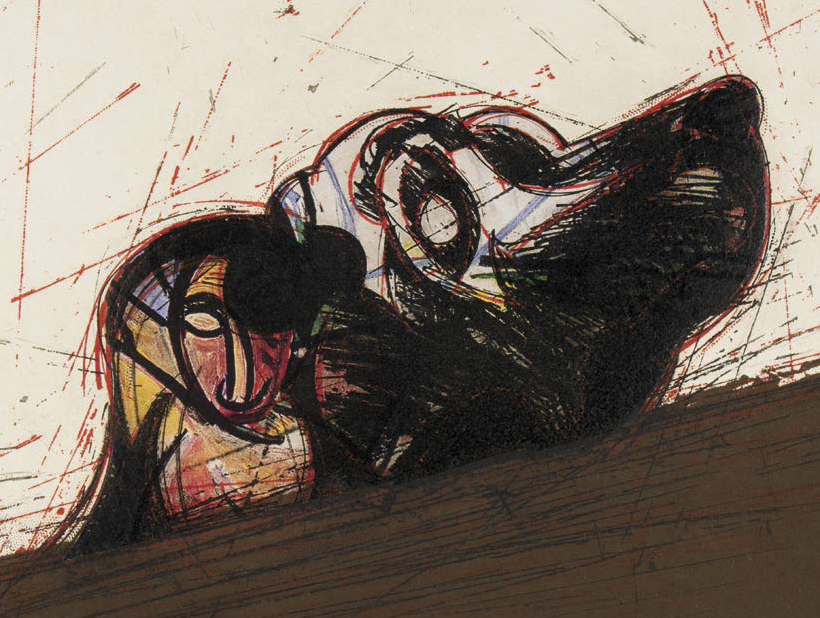
Dog II (detail), 2008. Ed. 50. Etching and collage, 57 × 74 cm.
Damas y caballeros: Manolo Valdés, the reinventing art classics
Numbered and limited edition of 998 copies, each individually signed by the artist.
The edition consists of two volumes and a figure created especially for this piece. It features a reinterpretation of Velázquez’s Menina, crafted through artisanal techniques, where cracks and imperfections make each piece unique.
The Art Book includes 53 paintings, engravings, and collages from his most representative periods, personally selected by the artist and reproduced with the highest quality.
The Study Book gathers reflections from renowned experts in four chapters, analyzing the artist’s career, work, and influences.
